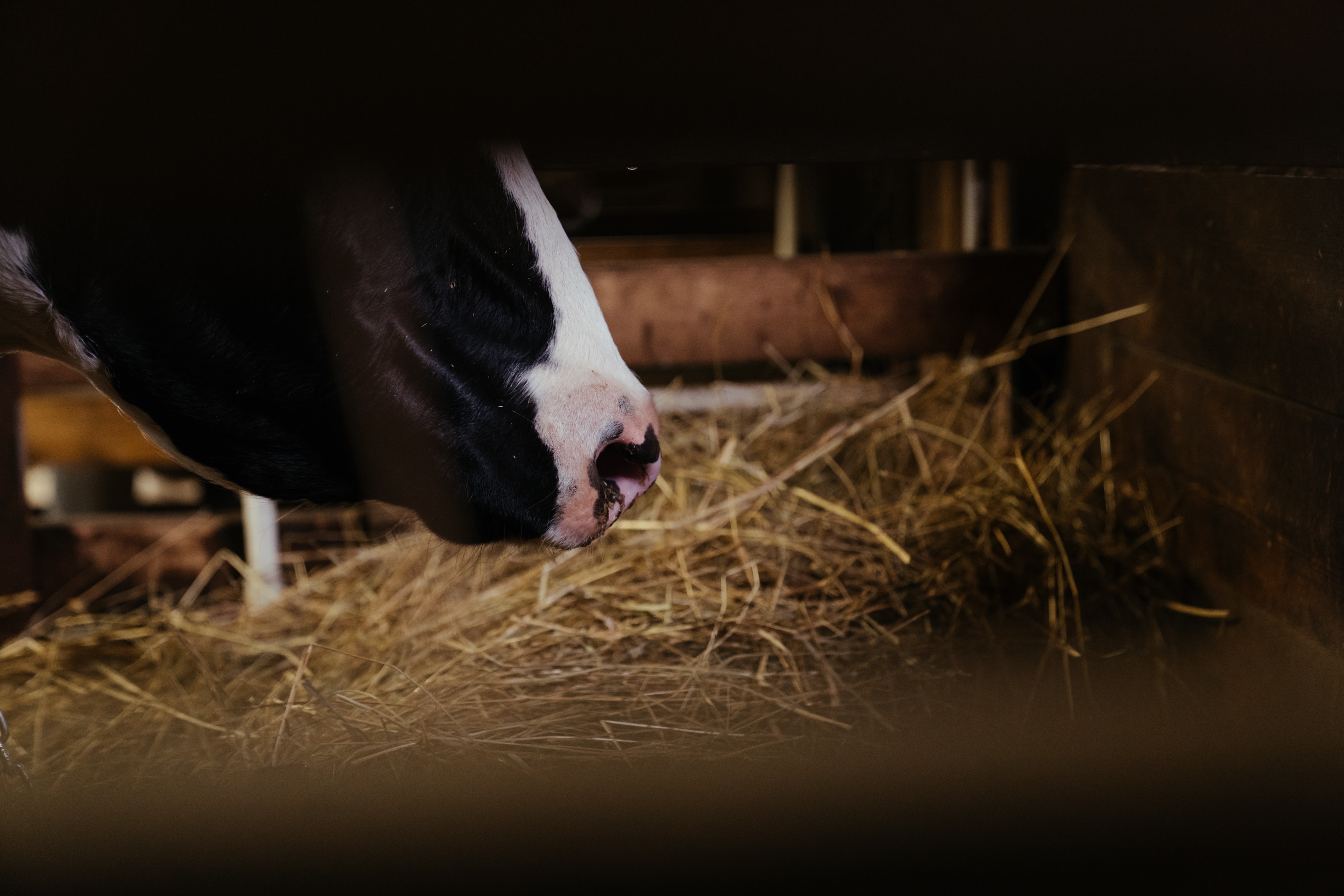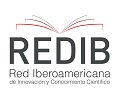Principales problemas sanitarios en bovinos identificados por los Médicos Veterinarios que se desempeñan en rodeos lecheros
DOI:
https://doi.org/10.14409/favecv.2023.22.e0017Palabras clave:
epidemiología, producción lechera, priorización de enfermedadesResumen
Los problemas sanitarios que afectan a las diferentes categorías animales en explotaciones lecheras son múltiples. Los recursos económicos y humanos disponibles para conducir las investigaciones tendientes a la prevención y control de estas enfermedades son limitados y resulta necesario priorizarlas en función de su impacto sanitario y productivo. El objetivo de este trabajo fue generar una priorización de los problemas que afectan a los rodeos lecheros e identificar las demandas de diagnóstico y capacitación. Se desarrolló un estudio observacional transversal basado en una encuesta con cuestionario estructurado en Médicos Veterinarios que trabajaban en rodeos lecheros con énfasis en la cuenca lechera central santafesina. Se aplicaron 105 encuestas, la antigüedad promedio en la actividad profesional fue de 15,9 años y, en su mayoría, dedicaban la mayor parte del tiempo laboral a lechería. Las enfermedades priorizadas en terneros fueron las diarreas y las neumonías. En vaquillonas se priorizó la neumonía, mientras que, en vacas, las mastitis, los problemas podales, los abortos, las endometritis/metritis y la mortalidad embrionaria fueron las enfermedades priorizadas. Aproximadamente la mitad de los profesionales pocas veces realizan necropsias y menos de un tercio remitían frecuentemente muestras para apoyatura diagnóstica. Si bien se identificaron los síndromes más comunes percibidos por los Médicos Veterinarios a campo, el hecho de que no se realicen comúnmente necropsias y que no se remitan muestras al laboratorio, impacta directamente en el conocimiento sobre los agentes etiológicos que afectan los rodeos. Resulta de suma importancia diseñar estrategias que le permitan a los colegas arribar al diagnóstico etiológico para luego poder diseñar medias de manejo del riego con base en ciencia.
Citas
Abdala A, Alvarez I, Brossel H, Calvinho L, Carignano H, Franco L, Gazon H, Gillissen C, Hamaidia M, Hoyos C, Jacques JR, Joris T, Laval F, Petersen M, Porquet F, Porta N, Ruiz V, Safari R, Suárez Archilla G, Trono K, Willems L. 2019. BLV: lessons on vaccine development. Retrovirology 16: 26. DOI: 10.1186/s12977-019-0488-8.
Abdala A, Garbaccio S, Zumárraga M, Tarabla HD. 2015. Mycobacterium bovis en fauna silvestre de la cuenca lechera de Santa Fe, Argentina. Rev. Arg. Microbiol. 47: 174-182. DOI: 10.1016/j.ram.2015.04.005
Azizzadeh M, Fazeli Shooroki H, Shafiee Kamalabadi A, Stevenson MA. 2012. Factors affecting calf mortality in Iranian Holstein dairy herds. Prev. Vet. Med. 104: 335-340. DOI: 10.1016/j.prevetmed.2011.12.007
Bach KD, Sipka A, McArt JAA. 2019. Case study: Evaluating quarter and composite milk sampling for detection of subclinical intramammary infections in dairy cattle. Prev. Vet. Med. 163:51-57. DOI: 10.1016/j.prevetmed.2018.12.013
Balabanova Y, Gilsdorf A, Buda S, Burger R, Eckmanns T, Gärtner B, Groß U, Haas W, Hamouda O, Hübner J, Jänisch T, Kist M, Kramer MH, Ledig T, Mielke M, Pulz M, Stark K, Suttorp N, Ulbrich U, Wichmann O, Krause G. 2011. Communicable Diseases Prioritized for Surveillance and Epidemiological Research: Results of a Standardized Prioritization Procedure in Germany, 2011. Plos ONE 6: e25691. DOI: 10.1371/journal.pone.0025691.
Bessell PR, Auty HK, Roberts H, McKendrick IJ, Mark de C. Bronsvoort B, Boden LA. 2020. A Tool for Prioritizing Livestock Disease Threats to Scotland. En: Boden l, Auty H, Porphyre T, Russell GC, Hagerman A, Delgado A, Grewar JD. Risk-based evidence for animal health policy. Ed: Frontiers in Veterinary Science. DOI: 10.3389/978-2-88966-116-9.
Bianchini J, Humblet MF, Cargnel M, Van der Stede Y, Koenen F, de Clercq K, Saegerman C. 2019. Prioritization of livestock transboundary diseases in Belgium using a multicriteria decision analysis tool based on drivers of emergence. Trans. Emerg. Dis. 67: 344-376. DOI: 10.1111/tbed.13356.
Cantón GJ, Odriozola ER. 2019. Técnica de necropsia de rumiantes: recolección de muestras para laboratorios de diagnóstico veterinario. Ediciones INTA (Buenos Aires), 47 pp.
Cardoen S, Van Huffel X, Berkvens D, Quoilin S, Ducoffre G, Saegerman C, Speybroeck N, Imberechts H, Herman L, Ducatelle R, Dierick K. 2009. Evidence-Based Semiquantitative Methodology for Prioritization of Foodborne Zoonoses. Foodborne Path. Dis. 6: 1083-1096. DOI: 10.1089/fpd.2009.0291.
Cataldi A, Canal MA, Soutullo A, Zumárraga MJ, Abdala A, Tarabla HD. 2014. La PCR del programa de vigilancia epidemiológica de Santa Fe es una herramienta nueva y de gran utilidad para la detección de esa enfermedad en tambos. Revista RIA 40: 116-123.
Dohoo IR, Smith J, Andersen S, Kelton DF, Godden S. 2011. Diagnosing intramammary infections: Evaluation of definitions based on a single milk sample. J. Dairy Sci. 94: 250-261. DOI: 10.3168/jds.2010-3559.
Dubuc J, Duffield TF, Lesie KE, Walton JS, LeBlanc SJ. 2010. Risk factors for postpartum uterine diseases in dairy cows. J. Dairy Sci. 93: 5764-5771. DOI: 10.3168/jds.2010-3429.
FAO. 2021. Technical guidelines on rapid risk assessment for animal health threats. FAO ANIMAL PRODUCTION AND HEALTH / GUIDELINES 24.
Fourichon C, Seegers H, Beaudeau F, Verfaille L and Bareille N. 2001. Health-control costs in dairy farming systems in western France. Livestock Prod. Sci. 68:141-156. DOI: 10.1016/S0301-6226(00)00248-7
Giangaspero M, Sekiguchi S. 2016. Risk Assessment of Animal Infectious Diseases and Decision Making Process. Clin Microbiol 5: 242. DOI: 10.4172/2327-5073.1000242.
Griffa N, Moyano RD, Canal AM, Travería GE, Santangelo MP, Alonso N, Romano MI. 2020. Development and diagnostic validation of an ELISA based on an antigenic mixture for the detection of bovine tuberculosis. The Vet. J. 256: 105426. DOI: 10.1016/j.tvjl.2020.105426
Halasa T, Huijps K, Osteras O, Hogeveen H. 2007. Economic effects of bovine mastitis and mastitis management: A review. Vet. Quarterly 29: 18-31. DOI: 10.1080/01652176.2007.9695224.
Humblet M-F, Vandeputte S, Albert A, Gosset C, Kirschvink N, Haubruge E, Fecher-Bourgeois F, Pastoret PD, Saegerman C. 2012. Multidisciplinary and evidence-based method for prioritizing diseases of food-producing animals and zoonoses. Emerg. Infect. Dis. 18: e1. DOI: 10.3201/eid1804.111151.
Huzzey JM, Veira DM, Weary DM., von Keyserlingk M.A.G. 2007. Prepartum Behavior and Dry Matter Intake Identify Dairy Cows at Risk for Metritis. J. Dairy Sci. 90: 3220-3233. DOI: 10.3168/jds.2006-807.
Kayanoa M, Kadohira M, Stevenson MA. 2016. Risk factors for stillbirths and mortality during the first 24 h of life on dairy farms in Hokkaido, Japan 2005–2009. Prev. Vet. Med. 127: 50-55. DOI: 10.1016/j.prevetmed.2016.03.012
Kemmeren JM, Mangen MJJ, van Duynhoven YTHP, Havelaar AH. 2006. Priority setting of foodborne pathogens Disease burden and costs of selected enteric pathogens. RIVM report 330080001/2006.
Kurowicka D, Bucura C, Cooke R, Havelaar A. 2010. Probabilistic Inversion in Priority Setting of Emerging Zoonoses. Risk Anal. 30: 715-723. DOI: 10.1111/j.1539-6924.2010.01378.x.
Havelaar AH, van Rosse F, Bucura C, Toetenel MA, Haagsma JA, Kurowicka, D, Heesterbeek JAP, Speybroeck N, Langelaar MFM, van der Giessen JWB, Cooke RM, H. Braks MAH. 2010. Prioritizing Emerging Zoonoses in The Netherlands. PLoS ONE 5: e13965. DOI: 10.1371/journal.pone.0013965.
LeBlanck SJ, Leslie KE, Duffield TF. 2005. Metabolic Predictors of Displaced Abomasum in Dairy Cattle. J. Dairy Sci. 88:159-170. DOI: 10.3168/jds.S0022-0302(05)72674-6.
Lindqvist R, Langerholc T, Ranta J, Hirvonen T, Sand S. 2020. A common approach for ranking of microbiological and chemical hazards in foods based on risk assessment - useful but is it possible? Crit. Rev. Food Sci. Nutr. 60: 3461-3474. DOI: 10.1080/10408398.2019.1693957.
Lombard JE, Garry FB, Urie NJ, McGuirk SM, Godden SM, Sterner K, Earleywine TJ, Catherman D, Maas J. 2019. Proposed dairy calf birth certificate data and death loss categorization scheme, J. Dairy Sci. 102: 1-9. DOI: 10.3168/jds.2018-15728.
Lucas AS, Swecker WS, Lindsay DS, Scaglia G, Elvinger FC, Zajac AM. 2007. The effect of weaning method on coccidial infections in beef calves. Vet. Parasitol. 145: 228-233. DOI: 10.1016/j.vetpar.2007.01.002.
Martin MS, Grau SA, Rutherford BW, Grandin T, Edwards-Callaway LN. 2019a. Survey of cow-calf producer perspectives on management strategies and industry challenges. Part 1: handling practices, and health and industry challenges. Transl. Anim. Sci. 3:195–203. DOI: 10.1093/tas/txy138.
Martin MS, Grau SA, Rutherford BW, Grandin T, Edwards-Callaway LN. 2019b. Survey of cow-calf producer perspectives on management strategies and industry challenges. Part 2. Marketing and selection decisions. Transl. Anim. Sci. 3:225–236. DOI: 10.1093/tas/txz010.
Ng V, Sargeant JM. 2012. A Quantitative and Novel Approach to the Prioritization of Zoonotic Diseases in North America: A Public Perspective. Plos ONE 7: e48519. DOI: 10.1371/journal.pone.0048519.
Nietfeld JC. 2010. Field Necropsy Techniques and Proper Specimen Submission for Investigation of Emerging Infectious Diseases of Food Animals. Vet. Clin. Food Anim. 26: 1-13. DOI: 10.1016/j.cvfa.2009.10.005.
Nuñez-García J, Downs SH, Parry JE, Abernethy DA, Broughan JM, Camerond AR, Cook AJ, de la Rua-Domenech R, Goodchild AV, Gunn J, More SJ, Rhodes J, Rolfe S, Sharp M, Upton PA, Vordermeier HM, Watson E, Welsh M, Whelan AO, Woolliams JA, Clifton-Hadley RS, Greiner M. 2018. Meta-analyses of the sensitivity and specificity of ante-mortem and post-mortem diagnostic tests for bovine tuberculosis in the UK and Ireland. Prev. Vet. Med. 153: 94-107. DOI: 10.1016/j.prevetmed.2017.02.017.
OMS. 2008. Priority Setting Methodologies in Health Research: A workshop convened by WHO’s Cluster on Information EaRI, its Department for Research Policy and Cooperation (RPC) and the Special Programme for Research and Training in Tropical Diseases (TDR).
Organization for Animal Health. 2010. Phylum study: listing and categorisation of priority animal diseases, including those transmissible to humans—Mission Report 2010. Disponible en: http://www.oie.int/fileadmin/Home/eng/Support_to_OIE_Members/docs/ppt/OIE_study_priori-catego_mission_report.pdfExternal Link.
Ospina PA, Nydam DV, Stokol T, Overton TR. 2010. Associations of elevated nonesterified fatty acids and β-hydroxybutyrate concentrations with early lactation reproductive performance and milk production in transition dairy cattle in the northeastern United States. J. Dairy Sci. 93: 1596-1603. DOI: 10.3168/jds.2009-2852
Palma Parodi F, Montes D, Bilbao G, Bergonzelli P, Baudrix D. 2013. Mortalidad en terneras en crianza artificial en un tambo del partido de Balcarce, región Mar y Sierras. Pp: 56. In: 36º Congreso Argentino de Producción Animal.
Reimus K, Orroa T, Emanuelson U, Viltrop A, Mõtus K. 2017. Reasons and risk factors for on-farm mortality in Estonian dairy herds. Livestock Sci. 198: 1-9. DOI: 10.1016/j.livsci.2017.01.016.
Sánchez J, Simintiras C, Lonergan P. Aspects of embryo-maternal communication in establishment of pregnancy in cattle. 2019. Proceedings of the 33rd Annual Meeting of the Brazilian Embryo Technology Society (SBTE). DOI: 10.21451/1984-3143-AR2019-0075.
Sartori R, Bastos M, Wiltbank M. 2010. Factors affecting fertilisation and early embryo quality in single- and superovulated dairy cattle. Reprod. Fertil. Dev. 22: 151–158. DOI: 10.1071/RD09221.
Schild CO, Caffarena RD, Gil A, Sánchez J, Riet-Correa F, Gianitti F. 2020. A survey of management practices that influence calf welfare and an estimation of the annual calf mortality risk in pastured dairy herds in Uruguay. J. Dairy Sci. 100: 9418-9429. DOI: 10.3168/jds.2020-18177.
SENASA. 2012. Resolución 128/2012. Plan Nacional de Control y Erradicación de la Tuberculosis Bovina: Se aprueba el Plan Nacional de Control y Erradicación de la Tuberculosis Bovina en la REPÚBLICA ARGENTINA. Disponible en: http://www.senasa.gob.ar/normativas/resolucion-128-2012-senasa-servicio-nacional-de-sanidad-y-calidad-agroalimentaria.
Seppä-Lassila L, Sarjokari K, Hovinen K, Soveri T, Norring M. 2016. Management factors associated with mortality of dairy calves in Finland: A cross sectional study. Vet. J. 216: 164-167. DOI: 10.1016/j.tvjl.2016.07.008
Stankov K. 2020. Effect of clinical mastitis at Holstein-Friesian cows on the farm economic efficiency. Agric. Sci. Tech. 12: 375-378. DOI: 10.15547/ast.2020.04.060.
Thomsen PT, Dahl-Pedersen K, Jensen HE. 2012. Necropsy as a means to gain additional information about causes of dairy cow deaths. J. Dairy Sci. 95: 5798–5803. DOI: 10.3168/jds.2012-5625
Trsein M, Lindberg A, Sandgren CH, Persson Wallerd K, Törnquist M, Svensson C. 2011. Risk factors for calf mortality in large Swedish dairy herds. Prev. Vet. Med. 99: 136-147. DOI: 10.1016/j.prevetmed.2010.12.001.
van der Fels-Klerx HJ, van Asselt ED, Raley M, Poulsen M, Korsgaard H, Bredsdorff L, Nauta M, Flari V, d'Agostino M, Coles D, Frewer L. 2015. Critical review of methodology and application of risk ranking for prioritisation of food and feed related issues, on the basis of the size of anticipated health impact. EFSA J. 12: EN710. DOI: 10.2903/sp.efsa.2015.EN-710.
Wells SJ, Dargatz DA, Ott SL. 1996. Factors associated with mortality to 21 days of life in dairy heifers in the United States. Prev. Vet. Med. 29: 9-19. DOI: 10.1016/S0167-5877(96)01061-6
Welsh MD, Cunningham RT, Corbett DM, Girvin RM, McNair J, Skuce RA, Bryson DJ, Pollock JM. 2005. Influence of pathological progression on the balance between cellular and humoral immune responses in bovine tuberculosis. Immunology 114: 101-111. DOI: 10.1111/j.1365-2567.2004.02003.x
Wiltbank M, Baez G, Garcia-Guerra A, Toledo M, Monteiro P, Melo L, Ochoa J, Santos J, Sartori R. 2016. Pivotal periods for pregnancy loss during the first trimester of gestation in lactating dairy cows. Theriogenology 86: 239-253. DOI: 10.1016/j.theriogenology.2016.04.037.
Wisnieski L, Norby B, Pierce SJ, Becker T, Gandy JC, Sordillo LM. 2019. Predictive models for early lactation diseases in transition dairy cattle at dry-off. Prev. Vet. Med. 163: 68-78. DOI: 10.1016/j.prevetmed.2018.12.014.

Publicado
Cómo citar
Número
Sección
Licencia
Derechos de autor 2023 MOLINERI, Ana Inés; WELSCHEN, Nicolás Mario; SUÁREZ-ARCHILLA, Guillermo; CAMUSSONE, Cecilia; SMULOVITZ, Alejandro; CICOTELLO, Joaquín; MIOTTI, Camila; ZBRUN, María Virginia; SIGNORINI, Marcelo Lisandro

Esta obra está bajo una licencia internacional Creative Commons Atribución-NoComercial-CompartirIgual 4.0.
FAVE Sección Ciencias Veterinarias ratifica el modelo Acceso Abierto en el que los contenidos de las publicaciones científicas se encuentran disponibles a texto completo libre y gratuito en Internet, sin embargos temporales, y cuyos costos de producción editorial no son transferidos a los autores. Esta política propone quebrar las barreras económicas que generan inequidades tanto en el acceso a la información, como en la publicación de resultados de investigaciones.
Los artículos de la revista son publicados en http://bibliotecavirtual.unl.edu.ar/publicaciones/index.php/FAVEveterinaria/issue/current/, en acceso abierto bajo licencia Creative CommonsAtribución-NoComercial-Compartir Igual 4.0 Internacional.











